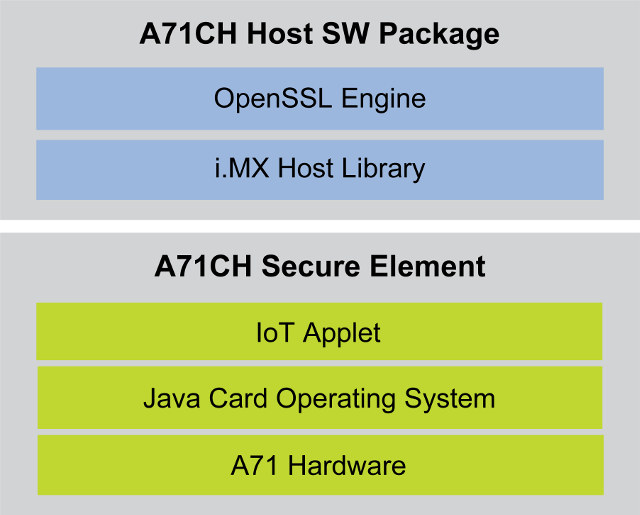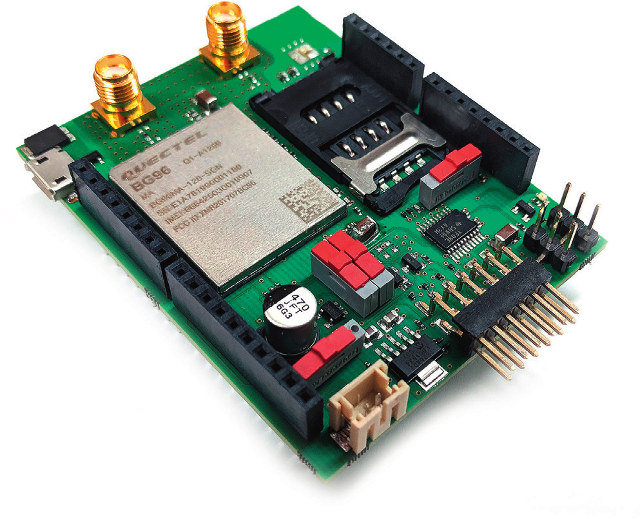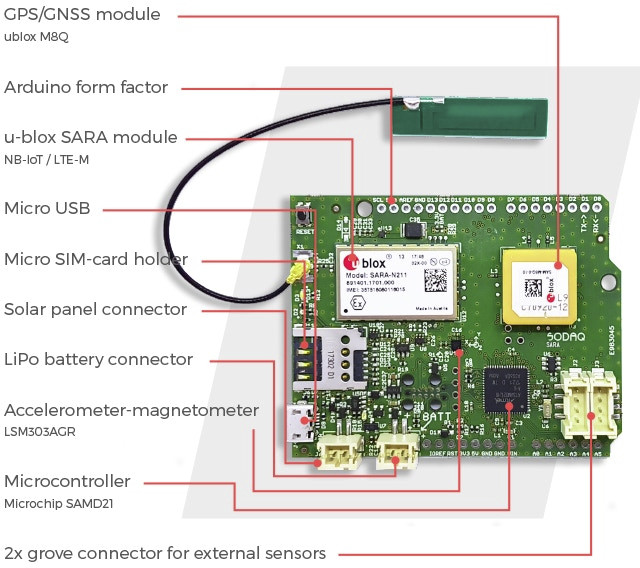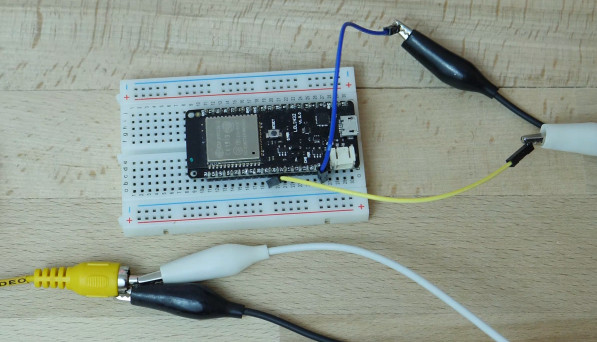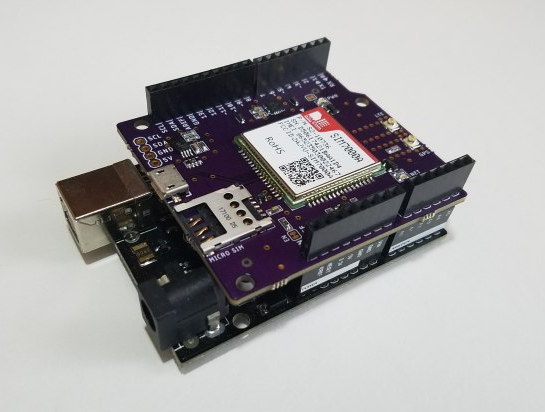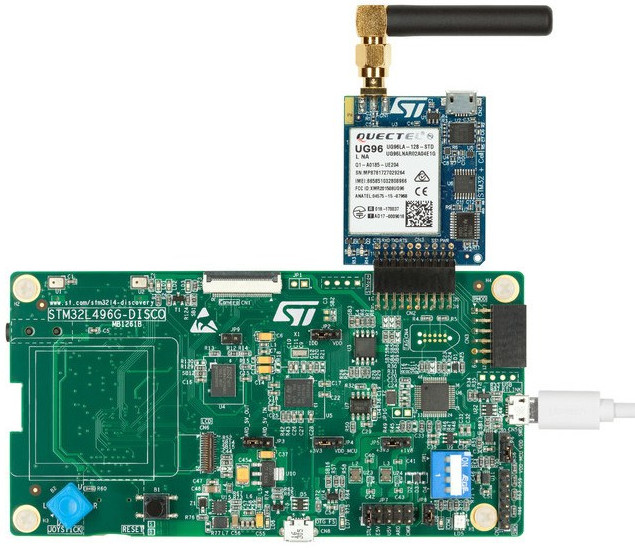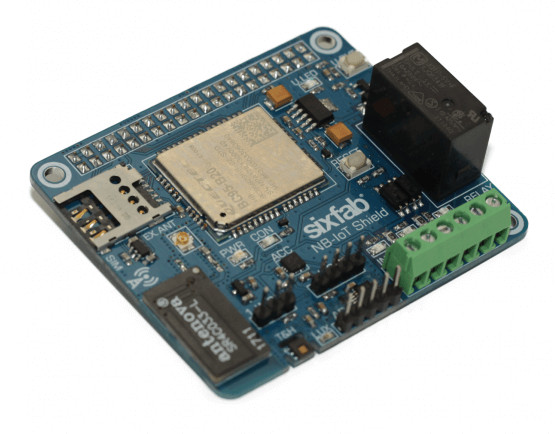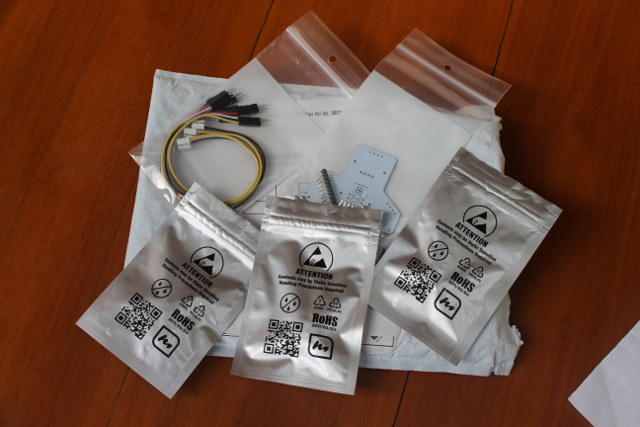The industry clearly has an issue at hand with the security of the Internet of Things, and the problem is complex as some devices are easily accessible due to bad configuration (e.g. default username/password), while others may have security flaws at various levels of the software stack from the low level bootloaders to the operating systems, and applications. Nowadays, devices also need to be upgradeable, and communicate with the cloud, and that introduces other attack vectors in case malignant firmware is installed instead, or a man-in-the-middle attack occurs. While some people may claim security can be achieved by software only, we are seeing security evolving towards combined software and hardware solutions, for example with Arm Trustzone built into SoCs, but some companies are also introducing Secure Element chip, which Samsung has already done and integrated into their Artik modules to secure data from the hardware to the cloud. NXP has […]
Avnet Silica NB-IoT Sensor Shield Works with mbed OS 5, STM32 Nucleo Board
If for some reasons, none of the many NB-IoT boards launched recently suit your needs, there’s yet another option with Avnet Silica NB-IoT sensor shield, that supports – despite the name – also supports LTE Cat M1 (eMTC) beside NB-IoT (LTE Cat NB1), and comes with Arduino headers, as well as a Pmod connector. The board relies on Quectel BG96 module, and can be controlled with Arm mbed OS 5 when connected to STM32 Nucleo board. NB-IoT Sensor Shield specifications: Cellular Module – Quectel BG96 LPWA Module Multi Modes: Cat.M1, Cat.NB1, EGPRS Global bands Cat M1/NB1: B1 B2 B3 B4 B5 B8 B12 B13 B18 B19 B20 B26 B28 B39 (B39 for Cat M1 only) EGPRS: 850/900/1800/1900 MHz Voice Over LTE support (M1 only) – PCM digital audio interface SIM card holder (also optional embedded SIM) Optional GNSS – GPS, GLONASS, BeiDou/Compass, Galileo, QZSS Expansion – Arduino headers, Pmod connector […]
SODAQ SARA is an Arduino Compatible Cellular IoT Board with LTE-M, NB-IoT, and GNSS (Crowdfunding)
There really seems to be a push for cellular IoT those days, with new hardware coming up every week. Following up on their NB-IoT shield for Arduino last year, SODAQ has now launched two versions of SARA boards based on u-blox SARA LTE-IoT modules, and u-blox M8Q GPS/GNSS module. Both boards are Arduino compatible thanks to a Microchip SAMD21 MCU, and while u-blox SARA board follows the Arduino form factor, u-box SARA SFF is much more compact (50×25.4 mm) and potentially easier to integrate into a project or product. Another pretty unique feature (AFAICT) is that you can power the board directly with a solar panel. u-blox SARA board specifications: Wireless module (three options) with external antenna: SARA-N211 NB-IoT, band 8 and 20, for the European and African market SARA-R410M Dual mode LTE-M and NB-IoT module for all global bands SARA-R412M Triple mode module with LTE-M, NB-IoT and 2G for […]
3D Rendering and Video Composite Output on ESP32 Boards
A few years ago, we already saw it was possible to transmit color signals over NTSC using an ESP8266 board with the signal received on a TV with an analog tuner. CNLohr had to connect an antenna to the I2S pin of his ESP8266 module, and disable WiFi. But surely we should be able to do the same with ESP32, and potentially even better thanks to the two cores. That’s exactly what Bitluni successfully managed by connecting his LoLin32 board to the composite input of his TV with one handling the TV signal output (in grayscale) and the other core rendering 3D objects in real-time. But any ESP32 board could be use instead. The hardware connection is very easy. We just need two wires, one connected to the GND pin and outer part of the RCA connector, and the other connected to GPIO 25 (DAC1) and the inner part of […]
LTE Cat M and NB-IoT Shield for Arduino Features SIMCom SIM7000-Series Module (Crowdfunding)
We’ve already covered several NB-IoT (and/or LTE Cat M1) Arduino shields with products like RAK Wireless WisLTE, Sixfab Arduino NB-IoT shield, or AIS NB-IoT shield, which all happen to come with Quectel modules. A young self-taught engineer has decided to make his own Arduino eMTC/NB-IoT shield, but based on a SIMCom SIM7000-series module instead of a Quectel one found in the other aforementioned products. Board specifications: Cellular Module (one of the list depending on your location) SIM7000A LTE Cat M1 & NB-IoT module certified for AT&T and Verizon in the US SIM7000C Cat M1/NB-IoT module with 2G/2.5G fallback for the Chinese market SIM7000E Cat M1/NB-IoT module with 2G/2.5G fallback for the European market Note: The developer is also looking into SIM7000G module which should work globally, but the option is not available for now Micro SIM card holder GNSS – GPS/GLONASS with 2.5m accuracy supported by SIMCom modules Antenna – […]
STMicro Introduces Two STM32 Discovery Kits with 2G/3G or 4G LTE-IoT Cat M1/NB1 Connectivity
Embedded World 2018 trade fair will take place on on take place on February 27 – March 1 in Nuremberg, Germany, and we’re starting to see some company announce new products and solutions for the embedded market. STMicro has just announced their showcase their very first cellular development kits at the event, based on a display-less variant on their 32L496GDISCOVERY Discovery board with cellular add-on boards: P-L496G-CELL01 Discovery kit with with a 2G/3G modem P-L496G-CELL02 Discovery kit with with an LTE-IoT Cat M1 (eMTC) / NB1 (NB-IoT) / 2G model Now the company has not started designed their own cellular modem, but instead relying on QUECTEL modems. Both kits share most of the same specifications: MCU – STMicro STM32L496AGI6 Arm Cortex M4F MCU@ 80 MHz with 1 MB Flash, 320 KB RAM in a UFBGA169 package On-board memory – 8 Mbit PSRAM On-board + external storage – 32 KB I2 […]
Sixfab Launches Arduino and Raspberry Pi NB-IoT Shields with Four Sensors
SixFab previously introduced a 3G/4G base shield for the Raspberry Pi boards that would take Quectel based mini PCIe card in order to add cellular connectivity to the popular development boards. The company is now back with NB-IoT shields that should better suited to IoT projects with lower hardware and data costs, and support either 40-pin Raspberry Pi boards or Arduino. SixFab Raspberry Pi NB-IoT Shield Specifications & features: Module – Quectel BC95-B20 NB-IoT Module supporting 800MHz frequency (suitable for the European market) Micro SIM card socket, PCB Antenna and u.FL socket for external antenna I/O expansions 4x Channel 12-bit ADC via ADS1015 Relay with optocoupler protection (24V DC, 120-220V AC Switching) 3-pin 1-Wire interface for DS18B20, DHT21, etc… 4-pin I2C interface 3.3V reference voltage Sensors MMA8452Q 3-axis accelerometer HDC1080 temperature sensor (-40 to +125 °C) HDC1080 humidity sensor (0 to 100%) ALS-PT19 ambient light sensor Misc – User button […]
Getting Started with TinyLIDAR Time-of-Flight Sensor on Arduino and Raspberry Pi
TinyLIDAR is an inexpensive and compact board based on STMicro VL53L0X Time-of-Flight (ToF) ranging sensor that allows you to measure distance up to 2 meters using infrared signals, and with up to 60 Hz. Contrary to most other VL53L0X boards, it also includes an STM32L0 micro-controller that takes care of most of the processing, frees up resource on your host board (e.g. Arduino UNO), and should be easier to control thanks to I2C commands. The project was successfully funded on Indiegogo by close to 600 backers, and the company contacted me to provided a sample of the board, which I have now received, and tested with Arduino (Leonardo), and Raspberry Pi (2). TinyLIDAR Unboxing I was expecting a single board, but instead I received a bubble envelop with five small zipped packages. Opening them up revealed three TinyLIDAR boards, the corresponding Grove to jumper cables, and a bracket PCB for […]


